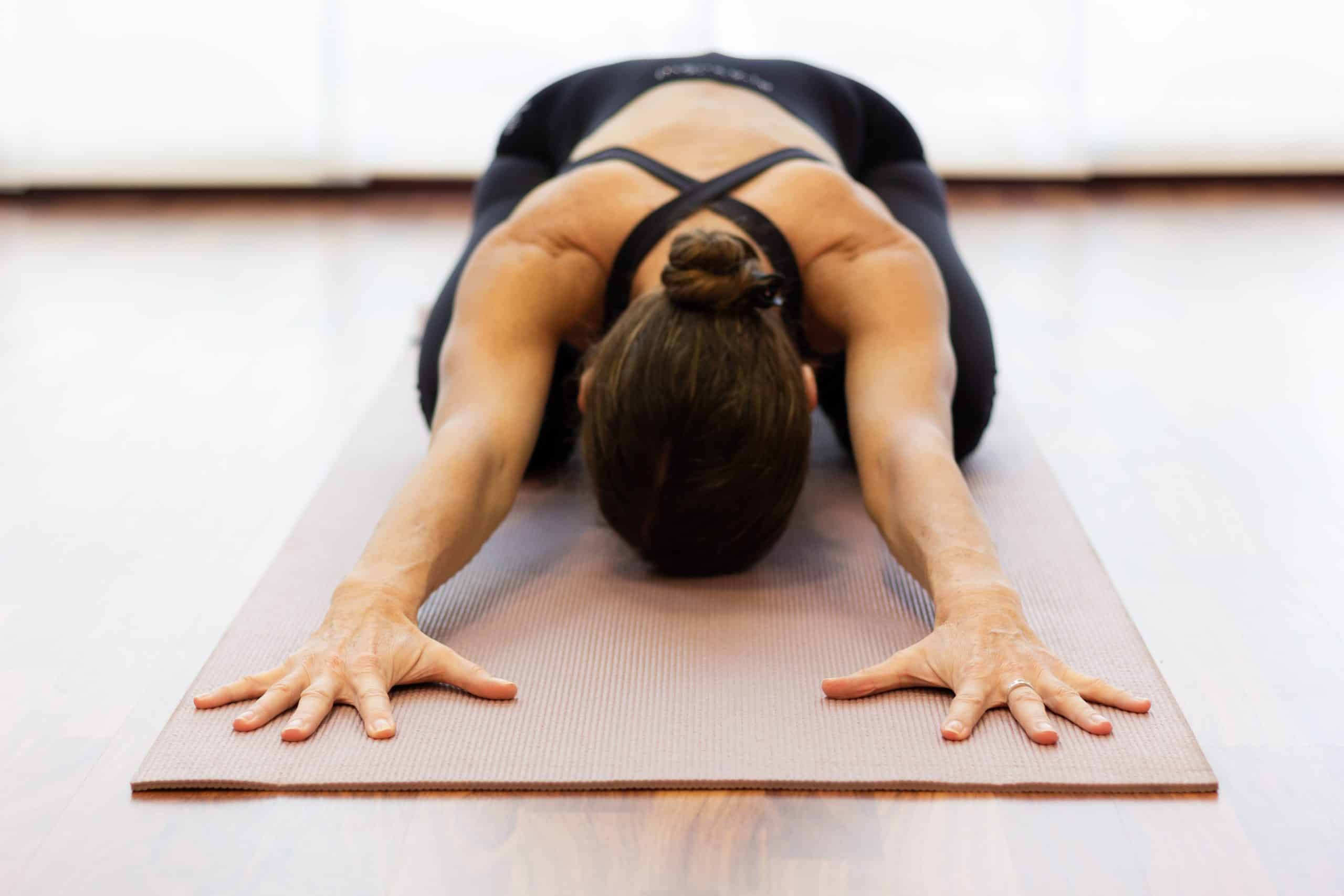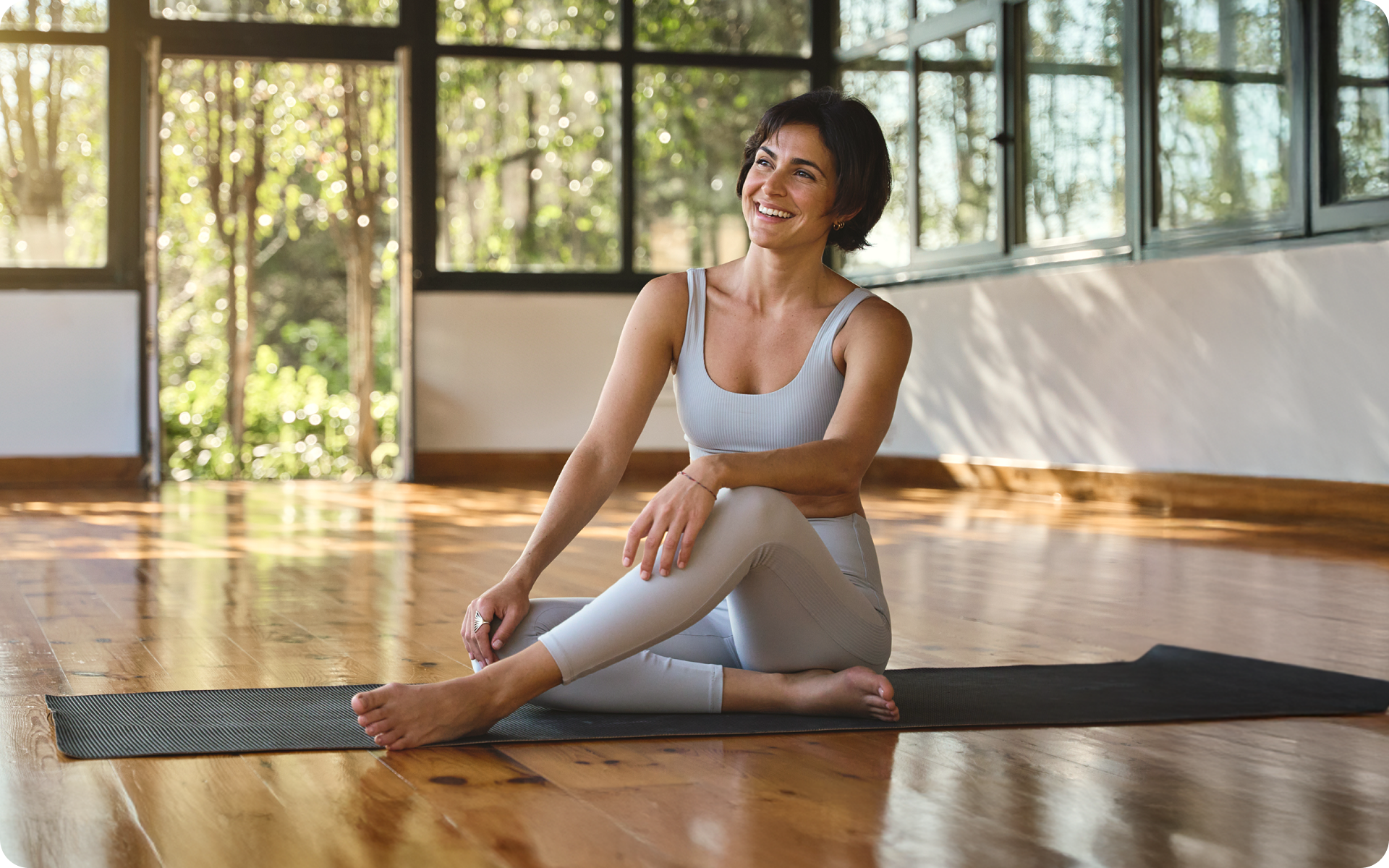Many articles, studies, and research gush about the potential yin yoga benefits. Yin yoga before and after results allure new practitioners into this serene session. You’ll find them trekking their way to yoga studios to immerse themselves in the relaxing poses.
There is no doubt yin yoga benefits exist and deserve to be explored. But the problem starts when people with certain health issues decide to enter yin yoga practice, as well as individuals who instead of gently getting into a pose, push themselves as hard as possible.
It’s not only about yin yoga, every kind of sportive activity requires proper form and technique.
When you fail, your body reacts negatively evoking painful feelings. Another issue appeals to rival individuals who take yin yoga as a competition: who hold onto the pose longer without listening to their body needs.
And then they end up with other complaints afterward without even realizing that their ego perpetuates yin yoga dangers.
I have no clue why you chose this article, perhaps you’re about to start the yin yoga journey, or you have tried it already but haven’t reaped the benefits you strived for. Now you’re about to explore the answer to one crucial question – Is Yin Yoga dangerous?
Additionally, you will unveil potential techniques and tips to practice yin yoga safely.
What is Yin Yoga?
Let’s start with the terminology first.
Yin yoga is a specific type of yoga where instead of switching between poses after a few breaths, you hold each pose for longer (4). Beginners hold each pose for at least 1-2 minutes while advanced practitioners stay in the pose for 10 minutes.
Yin yoga for beginners as well as the yogi pros have an excellent activity to balance their intense workouts.
Some people find it dangerous as staying longer in the pose seems more challenging and uncomfortable.
If you struggle to even flirt with the idea of giving up your favorite foods or working out till your legs give way – BetterMe app is here to breathe a fresh perspective into the way you view the weight loss process! Check out the app and experience the fun side of fitness and dieting with BetterMe!
What are the disadvantages of yin yoga?
Soothing your mind and relaxing your body sounds wonderful but what about the Disadvantages Of Yoga?
At this point, I’m presenting you the top-3 drawbacks of yin yoga:
- You may overstretch your muscles and connective tissues
- You may restrict blood flow during some asanas
- You may compress joints
You may overstretch your muscles and connective tissues
You have heard that yin yoga stretches deep connective tissues in your body along with the fascia. Fascia is not isolated in the body: When we’re stretching any fascia, we are always stretching so-called myofascial trains (chains of muscles, connected fascia, joints, and nerves).
These tissues of fascia can lead to pain and problems during the prolonged strain on them (1).
Still, many yin yoga poses involve deep forward folds or flexion, such as the saddle or dragonfly poses. If you hold these poses for extended periods you might overstretch your muscles or connective tissues. Going too deep or holding on to each pose for too long could tear ligaments or tendons. With this in mind you should get in the poses slowly and deliberately without pushing yourself.
Holding the pose for 5 to 6 minutes may not be beneficial for your body. It places too much strain on your muscles (5). If you still desire to stay in the pose longer, make sure you’re doing it under the supervision of a licensed yoga master.
You may restrict blood flow during some asanas
Yet, some yin yoga poses may limit circulation, especially in your legs, hips, and pelvis. Lying for too long with legs crossed or knees bent can restrict blood flow.
You may compress joints
Some yin poses such as the frog pose, or sleeping swan fold the body into compressed postures.
These postures place a lot of pressure on your hips, knees, spine, neck, and shoulders. Some people need to use cushions and props to support joints in these shapes.
Is it safe to do yin yoga every day?
Despite the potential risks we have explored, for people who do not suffer from any injuries or health conditions, practicing yin yoga is safe to do daily. You should remember that doing yin yoga on your own as a beginner might not be right for you. Some yin yoga poses are too challenging for holding them longer.
It’s highly recommended for you to begin your yin yoga practice with an instructor. They will guide you through each pose and speed up the process to reap the benefits and avoid the drawbacks.
Follow these tips to ensure a safe yin yoga practice:
- Practice each asana slowly. Hold each pose for an adequate amount of time, at least one to two minutes. In case of discomfort, change the depth or angle of the pose, or slowly move out of the position entirely.
- Focus on your body without comparing yourself to others. Don’t exhaust yourself with too long or challenging postures, choose what’s best for you. Don’t worry, with enough practice you’ll improve your performance.
- Strive for comfort. You shouldn’t focus on the perfection of each pose. The dangers of yin yoga start as you impose too much intensity on your body. Relax and enjoy the process instead.
I understand that you may not have enough time for yin yoga sessions in the studio. Why not try Office Yoga? Take a break from the bustling calls and meetings and spare 5 minutes for the relaxing postures.
Read more: Yoga for Moms Who Need a Break: A Simple Guide
Is Yin Yoga difficult?
Following your yoga plan is no easy feat. And there is one primary reason why it could be challenging for you: the duration of the poses.
It’s funny how beginning enthusiasts pick a yin yoga pose assuming it’s going to be simple. I mean, what could go wrong? You just stay in the pose for 1 to 5 minutes and then switch to another. No big deal.
But when it comes to practice, all the expectations for “restorative” relaxation vanish as staying in the asana longer is tough.
This is particularly true for those people who haven’t practiced any sport for a long time. Soreness after yin yoga is the most evident outcome after the first session.
On top of the mentioned techniques in the previous segment, incorporate this hack: do a warm-up in advance (2).
A warm-up for light physical activity, including yin yoga should take around 10 minutes. It consists of light aerobic activity and some dynamic stretching movements. For example:
- jogging on the spot
- walking up and down stairs
- fast-paced walking
- fast-paced side stepping
- squats
- arm swings
- lunges (3).
The importance of warm-up is crucial, as it reduces your risk of injury during physical activity and even soreness the next day (3). A nice warm-up will prepare you physically and mentally for the activity.
Stating that warm-ups are only applicable before intensive training or running is odd. We need warm-ups before every exercise, whether it’s dancing or in this case immersing in yin yoga poses.
Can yin yoga cause pain?
Yin yoga itself cannot cause pain if you’re following the proper technique and form. The big problem with some people is that they desire to prove something to themselves by striving for longer or more difficult poses.
They ignore the sharp electric pain by continuing to hold the asana. Don’t do that, as it will get worse. Instead, you should enjoy each asana without overstretching. The big hack here: simply listen to your body. As you start feeling any pain or discomfort, change the pose or take less time to hold it. Treat your practice as a rejuvenating process and not a competition.
Whether you’re a workout beast or just a beginner making your first foray into the world of fitness and dieting – BetterMe has a lot to offer to both newbies and experts! Install the app and experience the versatility first-hand!
Is Yin Yoga for everyone?
While yin yoga is relatively safe for most people, there are a few circumstances where it may not be suitable. Check with your healthcare provider before practicing yin yoga if:
- You are pregnant or have recently given birth. During pregnancy, the body releases relaxation which increases joint flexibility which may lead to overstretching and injury during yin yoga. You may practice yin yoga pregnancy poses if you are pregnant but avoid getting deep into each asana (4).
- People suffering from hypermobility or osteoporosis have a higher risk of injuring themselves from the yin yoga practice. They should either practice yin yoga with greater caution or avoid it altogether. During certain yin yoga poses they may damage the restraining connective tissue.
- People with osteopenia, and/or low bone density also have to perform yin yoga poses cautiously as many yin yoga poses involve extended periods of flexion of the spine. When the spine is in inflection it can cause weak discs to bulge or bring damage to the spine.
If you have osteoporosis, low bone density, or osteopenia, search for a yin yoga instructor who can modify poses to make them safe for you. Modifying each pose can ensure flexion originates from the hip and not the spine.
Read more: Somatic Yoga: A Journey to Self Discovery
FAQs
How many days a week should you do yin yoga?
It depends on the person. In general, if you practice yin yoga in good form and follow the proper techniques, you are welcome to practice it every day. Yet, in some cases, your body will require adequate rest. Therefore, doing yin yoga for 2-3 times a week is your perfect catch.
How many times a week can you do yin yoga?
Doing yin yoga 2-3 times a week is perfectly fine. It’s not about the quantity but the quality of your performance. Practicing yin yoga gently under the supervision of the instructor is your right strategy. Make sure you warm yourself up before the practice, this is going to benefit your future yin yoga sessions and reduce the risk of injuries.
How many days a week can you do yin yoga?
You can do yin yoga 7 days a week if you’d like. However, beginners should strive for 2-3 days a week. You will have some rest days between your practices and during time will upgrade to more consistent sessions.
How often can you practice yin yoga?
It doesn’t matter how often you practice yin yoga. Here’s what matters: your fitness levels, warm-up activity before the yin yoga, proper techniques, and listening to your body’s needs. This means, starting your yin yoga session with a licensed instructor is vital as they will shed light on the proper techniques and form that fits your physical abilities.
The Bottom Line
Is Yin Yoga dangerous? Hope, you’ve got your answer in this article.
Yin yoga is a passive yoga style during which you hold each pose longer. It boasts versatile benefits but there is a flip side to them.
You have disclosed the 3 dangers of yin yoga you haven’t expected. They include:
- overstretched muscles and connective tissues
- restricted blood flow during some asanas,
- compressed joints.
There are kinds of people who should avoid some yin yoga poses or the whole practice whatsoever: pregnant people or those who have given birth to a child, individuals suffering from hypermobility or osteoporosis as well as those with osteopenia, and/or low bone density.
However, doing yin yoga is still a great idea as it promotes your physical and emotional health. All you need to do is follow the instructions of the professional yin yoga coach and listen to your body’s needs.
The rule of thumb is simple: instead of comparing yourself to other practitioners, choose what’s best for you. Improve your chances of getting all the benefits by implementing a warm-up activity before yin yoga.
DISCLAIMER:
This article is intended for general informational purposes only and does not serve to address individual circumstances. It is not a substitute for professional advice or help and should not be relied on for making any kind of decision-making. Any action taken as a direct or indirect result of the information in this article is entirely at your own risk and is your sole responsibility.
BetterMe, its content staff, and its medical advisors accept no responsibility for inaccuracies, errors, misstatements, inconsistencies, or omissions and specifically disclaim any liability, loss or risk, personal, professional or otherwise, which may be incurred as a consequence, directly or indirectly, of the use and/or application of any content.
You should always seek the advice of your physician or other qualified health provider with any questions you may have regarding a medical condition or your specific situation. Never disregard professional medical advice or delay seeking it because of BetterMe content. If you suspect or think you may have a medical emergency, call your doctor.
SOURCES:
- The Dangers of Yin Yoga (2019, bodywork.org)
- The Importance of Warm Ups in Yoga (yoga-teacher-training.org)
- Warm-up and cool-down (2022, nhsinform.scot)
- What Is Yin Yoga? (2022, webmd.com)
- Yin Yoga Is Bad For The Muscles (2020, yinyoga.com)









